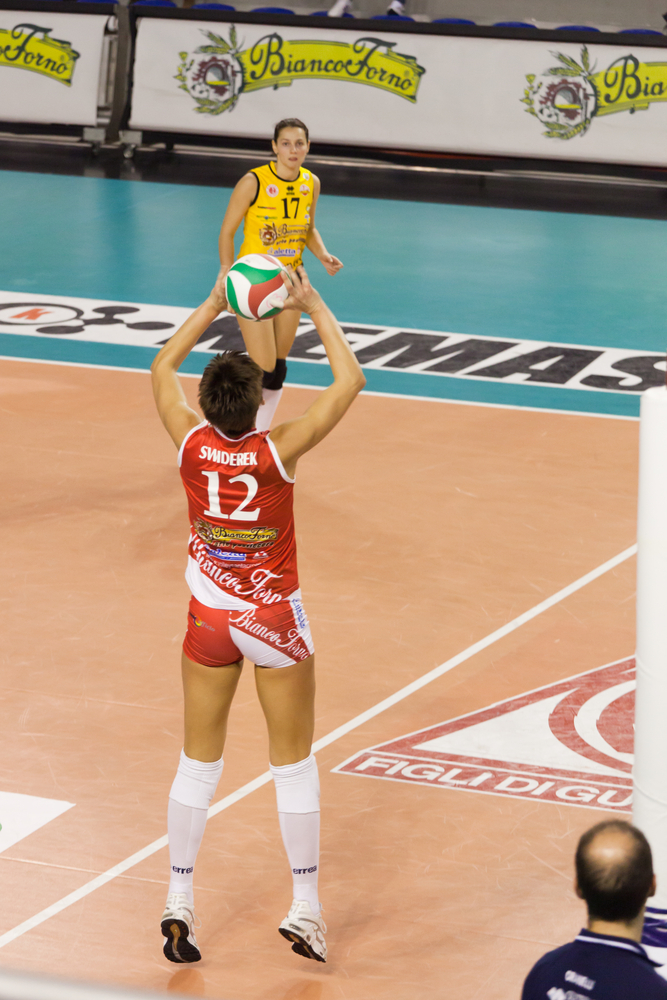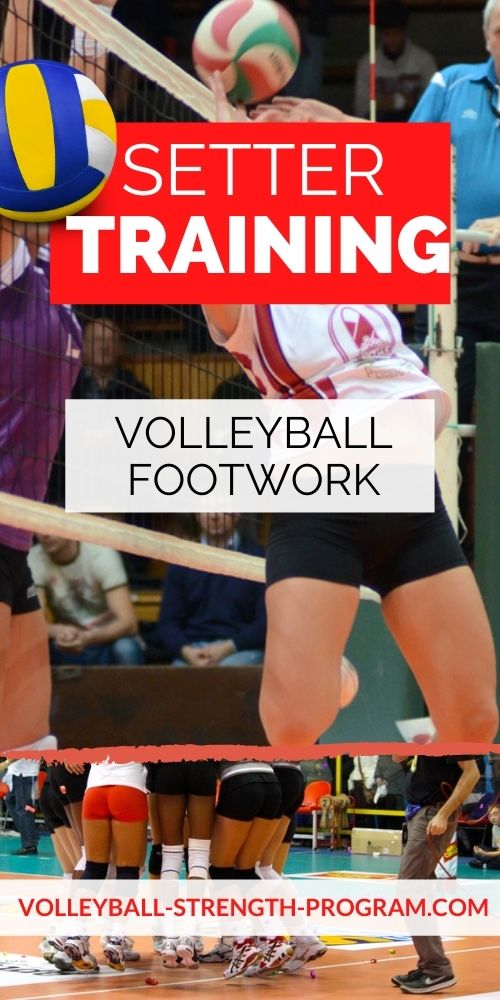Setter Footwork
Setter footwork is a critical skill for the setter to learn. Many coaches make the mistake of ignoring how to train the feet. It's critical for the setter to practice the footwork because if the setter is slow getting to the ball then it's going to be really difficult to set the hitter.
Making successful plays is all about positioning. And you can't get in position if you don't move quickly to the ball.

Setter Footwork and the Skills of a Great Setter
Have you ever noticed that the best setters use consistent footwork?
The best setters aren't just athletic, but they have also learned the correct setter footwork that allows them to get to the ball fast.
The Basic Setter Footwork
The basic footwork is a left-right finish to the ball. The purpose of finishing left-right is so the setter stays open to the ball while squaring the shoulders to the left-front target area.
Advanced Setter Footwork
Even if just a beginner, the setter should work on the more advanced footwork.
It's not that this setter footwork is more advanced, it's just that it takes more skill and discipline to make the commitment to training setter footwork. The basic footwork of left-right is for when the ball is easy to get to.
In order to be successful at making plays on tough passes, the setter must learn the more challenging footwork.
If you don't learn these movements, then you will continue to struggle on the tougher passes.
- Right-foot Spin Move. When you can, finish your move to the ball by "jumping off of" or "spinning on" the right foot. Most plays in volleyball are made by stepping off of one foot. When you hit and block, these are athletic moves executed off of two feet, but most other moves in volleyball are executed off of just one foot. The setter will often need to take many steps to the ball while always having the goal of finishing the movement so the shoulders are square to the left-front area. This is the time when the right-foot spin move works well. For example, for a ball off the net, take steps quickly and spin on the right foot as you turn into the ball.
- Left-foot Plant Move. There will be situations where the setter can't spin into the ball. This is more where you are moving with the ball (or falling back). To make an athletic play when you must fall back, this is where the left foot plant move comes in. This move works well for when the ball is heading toward zone 2 or any situation where the setter needs to fall away in the direction opposite zone 4.
If you enjoy these tips and would like to keep it close to you at any time, just save this pin to your Pinterest Volleyball Training Board.
Note: Whenever you are making a move to set, always focus on finishing the move in a way that allows the shoulders to be square to the left front area of the court. For example, you spin on the right foot so you can end up square. So, with the left-foot plant move, you're taking the plant step in a way that allows you to remain square to left-front.
Single Foot Moves are Generally Easier
Many coaches and setters are intimidated by the thought of practicing single foot moves. The fact is, playing a ball off of one foot may actually feel easier to do. Within time, the setter will eventually become more comfortable setting off one foot because it's easier to make plays when you give yourself an opportunity to be a more athletic setter.
The Purpose of Setter Footwork: Don't forget why we are focusing on training the feet. The goal is to help the setter become more athletic getting to the ball. If the setter becomes quicker, more athletic, and more movement efficient, then the setter will get in position faster. And it's all about positioning. The setter that struggles the most tends to be the one that struggles to get in the correct position to make the play.
Setter Footwork for Jump Setting
Most of the best setters jump set. If you develop this skill you will have a big advantage.
Advantages to the jump set...
- If you are in the air, it's easier to make an adjustment on the ball.
- When you take the ball higher it's easier to set the ball higher.
- You're more deceptive when you jump set because the position is consistent (all your jump sets look the alike - same positioning, same setting motion, etc).
- The ball coming from a jump set will get to the hitter faster than a ball that's set from a setter that is in contact with the floor.
Volleyball › Volleyball Techniques › Setter Footwork
ACCESS MY STRENGTH SECRETS




